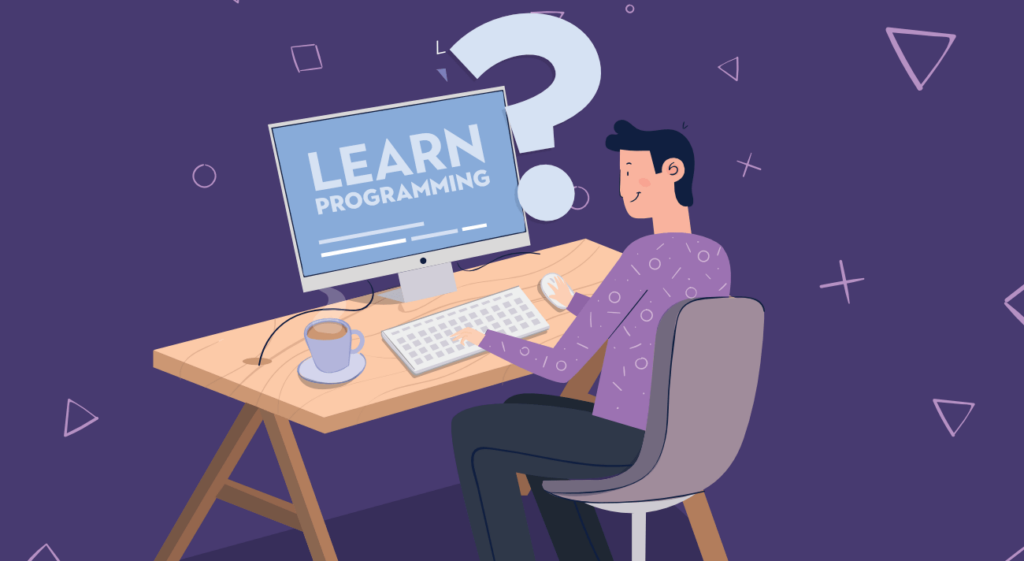Exploring the World of Coding: A Step-by-Step Guide for Beginners to Learn Programming

In an era driven by technology, understanding the fundamentals of coding has become a valuable skill. Learning to code opens doors to endless possibilities, from developing websites and mobile apps to solving complex problems and automating tasks. This comprehensive guide is designed to provide beginners with a step-by-step journey into the world of coding, offering insights, resources, and practical advice to foster a solid foundation in programming.
I. Understanding the Basics of Coding
A. Defining Coding and Programming
- Coding vs. Programming: Distinguish between coding and programming, understanding how these terms are related and the role they play in the development process.
- The Language of Computers: Explore how coding serves as a means of communication with computers, allowing humans to instruct machines to perform specific tasks.
B. Introduction to Programming Languages
- Diversity of Programming Languages: Gain insight into the variety of programming languages available, including Python, JavaScript, Java, and more. Understand the strengths and use cases of each language.
- Choosing the Right Language: Consider factors such as ease of learning, versatility, and community support when selecting the programming language best suited for beginners.
II. Setting Up Your Coding Environment
A. Installing a Text Editor or Integrated Development Environment (IDE)
- Text Editors vs. IDEs: Learn the differences between text editors and integrated development environments. Explore popular choices like Visual Studio Code, Atom, and PyCharm.
- Configuring Your Environment: Follow step-by-step instructions to set up a coding environment that suits your chosen programming language.
B. Version Control with Git
- Understanding Version Control: Grasp the importance of version control in coding projects and the role of Git in managing code changes.
- Setting Up a Git Repository: Create your first Git repository and learn basic commands to track changes, collaborate with others, and maintain a version history.
III. Learning the Basics of Programming Logic
A. Variables and Data Types
- Introduction to Variables: Understand the concept of variables as containers for storing data. Explore data types, including integers, floats, strings, and booleans.
- Variable Naming Conventions: Follow best practices for naming variables to write clean and readable code.
B. Control Flow and Decision Making
- Conditional Statements: Master if statements, else clauses, and elif statements to control the flow of a program based on specific conditions.
- Loops: Explore for loops and while loops to iterate through data and perform repetitive tasks.
IV. Building a Strong Foundation in Coding Syntax
A. Syntax Rules and Conventions
- The Importance of Syntax: Recognize the significance of proper syntax in coding and how it influences the execution of programs.
- Common Syntax Rules: Explore syntax rules specific to your chosen programming language, ensuring adherence to conventions.
B. Functions and Modular Code
- Defining Functions: Learn to create functions, which are reusable blocks of code that perform specific tasks.
- Code Modularity: Understand the importance of modular code for better organization, maintenance, and collaboration.
V. Debugging and Troubleshooting
A. Debugging Techniques
- Identifying Errors: Develop skills to identify common coding errors, including syntax errors, runtime errors, and logical errors.
- Using Debugging Tools: Explore debugging tools available in your chosen coding environment to pinpoint and fix issues in your code.
VI. Introduction to Object-Oriented Programming (OOP)
A. OOP Concepts
- Understanding Objects: Grasp the concept of objects as fundamental units in OOP. Explore classes, instances, and encapsulation.
- Inheritance and Polymorphism: Learn about inheritance, allowing objects to inherit properties from other objects, and polymorphism, enabling flexibility in code design.
VII. Building Practical Projects
A. Hands-On Projects
- Creating a Simple Website: Apply HTML, CSS, and JavaScript skills to build a basic website. Understand the structure of web development.
- Developing a Simple App: Utilize a framework or library to build a simple mobile or desktop application. Apply coding concepts to solve real-world problems.
VIII. Continuous Learning and Resources
A. Embracing a Growth Mindset
- The Growth Mindset Philosophy: Adopt a growth mindset to view challenges as opportunities for learning and improvement.
- Persistence and Practice: Understand the importance of consistent practice and perseverance in becoming a proficient coder.
B. Leveraging Online Resources
- Online Learning Platforms: Explore popular online platforms such as Codecademy, Coursera, and Udacity to access interactive coding courses.
- Open Source Communities: Join open-source communities, forums, and coding meetups to connect with fellow learners and experienced developers.
IX. Advanced Topics and Specializations
A. Specializing in Areas of Interest
- Frontend vs. Backend Development: Explore the differences between frontend and backend development and decide on a specialization based on personal interests.
- Data Science, Machine Learning, and Beyond: Delve into advanced topics such as data science, machine learning, and artificial intelligence as you progress in your coding journey.
X. Conclusion
Embarking on the journey to learn coding as a beginner is an exciting endeavor filled with challenges and triumphs. This step-by-step guide provides a roadmap for navigating the world of coding, from understanding the basics to building practical projects. Embrace the continuous learning mindset, leverage online resources, and apply your coding skills to real-world projects. As you explore the vast landscape of programming, remember that coding is a dynamic and evolving field, and each line of code you write contributes to your growth as a programmer. Happy coding!




